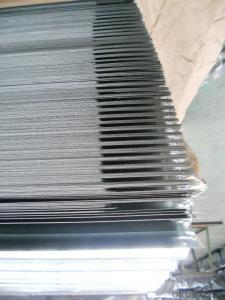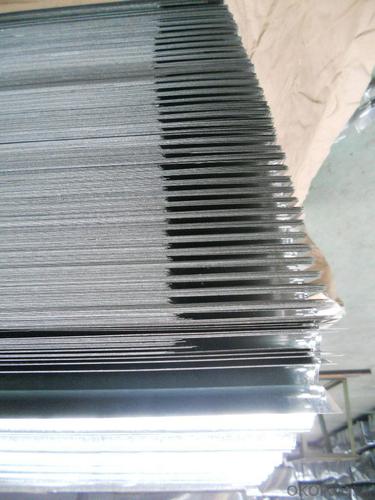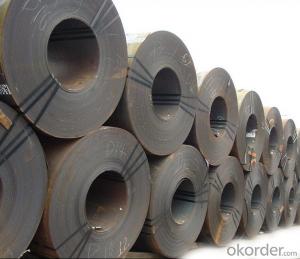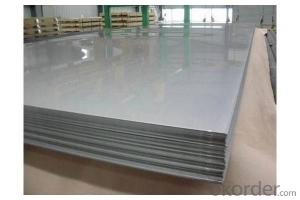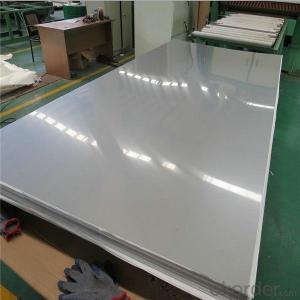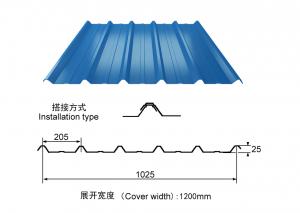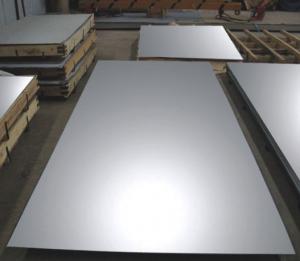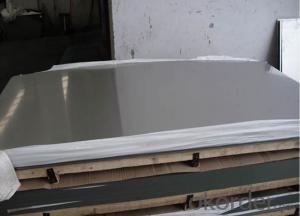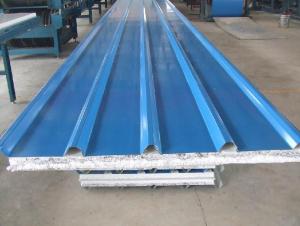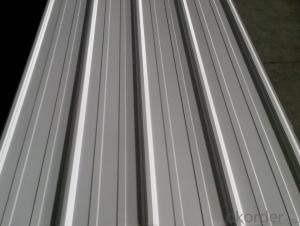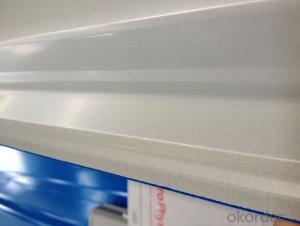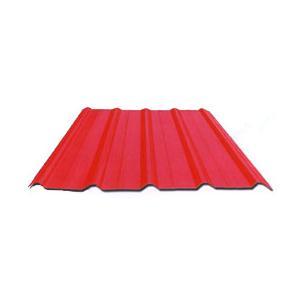Corrugated steel sheet
- Loading Port:
- China Main Port
- Payment Terms:
- TT OR LC
- Min Order Qty:
- -
- Supply Capability:
- -
OKorder Service Pledge
OKorder Financial Service
You Might Also Like
Corrugated steel sheet is the colored steel plate which has been wave formed with the cold rolling treatment, trough especial coated dispose, the color coated steel panel’s guaranty is 12-15 years.
It has been widely applied on civil construction like storerooms, special building roof and walls of wide-span steel structure building and so on.
Pressing steel panel with the clear line, and many colors for choice, suitable for any different building style materials, achieving satisfy effects;
Pressing steel panel can be freely incised, it can satisfy the especially designing demands. It apply on convenient construction, and anti-seismic performance, fire proof, waterproof, free of maintenance, ect.
CORRUGATED HOT DIPPED GALVANIZED STEEL SHEETS
THICKNESS TOLERANCE: (+/-0.01mm)
ZINC COATING: 50g/m2
WIDTH: 900mm (AFTER FORMING)
STANDARD:JIS G 3302, SGCH
SURFACE:REGULAR SPANGLE, CHROMATED, DRY
PACKAGE: 2- 3 TON/PALLET
SPECS: 0.18mm X 900mm X 2000mm
Specifications
1. Zinc coating :60-180g( as required)
2. thickness:0.14-0.80mm
3. width:700-1250mm( 750mm,900mm,1215mm,1250mm,1000mm the most common)
6. surface:regular/mini/zero spangle, chromated, skin pass, dry etc.
- Q: What is the difference between a laminated and non-laminated steel sheet?
- A laminated steel sheet is formed by layering multiple thin sheets of steel together, while a non-laminated steel sheet is made from a single solid piece of steel. The lamination process enhances the strength and durability of the sheet, making it more resistant to bending, warping, and corrosion. On the other hand, non-laminated steel sheets are generally less expensive and may be easier to work with due to their uniform composition.
- Q: Do the steel sheets have any sharp edges?
- Yes, steel sheets can have sharp edges. During the manufacturing process, steel sheets are often cut or sheared, which can leave sharp edges. It is important to handle steel sheets with caution and use appropriate protective equipment, such as gloves, when working with them to avoid any injuries from the sharp edges.
- Q: Are steel sheets suitable for HVAC systems?
- Yes, steel sheets are suitable for HVAC systems. Steel sheets are commonly used in HVAC systems due to their high strength, durability, and resistance to corrosion. They can be fabricated into various shapes and sizes to meet the specific requirements of HVAC components, such as ductwork, air handlers, and heat exchangers. Additionally, steel sheets can effectively withstand the high temperatures and pressures often encountered in HVAC applications.
- Q: Can the steel sheets be used for industrial machinery?
- Industrial machinery can indeed utilize steel sheets. Steel, known for its robustness, endurance, and resistance to damage, is a favored option for constructing industrial machinery. By shaping, cutting, and welding steel sheets, manufacturers can produce diverse components and parts essential for industrial machinery. The adaptability of steel empowers manufacturers to design and fabricate machinery that precisely meets specifications and demands. Furthermore, steel's capacity to endure hefty burdens, extreme temperatures, and corrosive surroundings renders it suitable for a vast array of industrial applications.
- Q: Are steel sheets suitable for architectural roofing?
- Yes, steel sheets are suitable for architectural roofing. Steel sheets offer durability, strength, and longevity, making them a popular choice for architectural roofing applications. They can withstand harsh weather conditions, provide excellent protection against elements like rain, snow, and sunlight, and are available in a variety of designs and finishes to enhance the aesthetic appeal of a building. Additionally, steel sheets are lightweight, which reduces the overall load on the structure, and they are also fire-resistant, making them a reliable choice for architectural roofing.
- Q: Are steel sheets resistant to UV rays?
- No, steel sheets are not inherently resistant to UV rays. Steel can be vulnerable to UV damage, which can cause it to fade, discolor, or even corrode over time. However, the extent of the damage will depend on various factors such as the type of steel, the thickness of the sheet, the specific UV exposure, and the presence of protective coatings. To enhance the UV resistance of steel sheets, manufacturers often apply coatings such as paint, powder coatings, or galvanized finishes that can provide some level of protection against UV rays. It is important to consult with steel suppliers or manufacturers to determine the specific UV resistance capabilities of the steel sheets being used and to consider additional protective measures if necessary.
- Q: How do steel sheets perform in terms of energy efficiency?
- Steel sheets have excellent energy efficiency properties. They have high thermal conductivity, allowing heat to be conducted quickly and evenly, reducing energy loss. Additionally, steel sheets can be coated with reflective materials to enhance their ability to reflect sunlight, further improving energy efficiency. Overall, steel sheets are a sustainable and energy-efficient choice for various applications.
- Q: Are the steel sheets suitable for HVAC applications?
- Yes, steel sheets are suitable for HVAC applications. Steel is a strong and durable material that can withstand high temperatures and mechanical stress, making it ideal for use in heating, ventilation, and air conditioning systems. Steel sheets are commonly used to fabricate HVAC components such as ducts, plenums, and air handling units. They offer excellent corrosion resistance, which is essential for maintaining the quality and longevity of HVAC systems. Steel sheets can be easily formed and welded, allowing for customization and efficient installation. Overall, the use of steel sheets in HVAC applications ensures reliable performance and longevity of the system.
- Q: What are the different sheet metal welding techniques for steel sheets?
- There are several different sheet metal welding techniques that can be used for steel sheets. Some of the most common techniques include: 1. Gas Metal Arc Welding (GMAW): Also known as MIG welding, this technique uses a continuous wire electrode to create an arc and join the steel sheets together. It is a versatile and efficient method, suitable for both thin and thick sheets. 2. Gas Tungsten Arc Welding (GTAW): Commonly referred to as TIG welding, this technique uses a non-consumable tungsten electrode to create an arc and join the steel sheets. It produces high-quality welds with excellent control and is often used for thin or delicate sheet metal. 3. Resistance Spot Welding (RSW): In this technique, two electrodes apply pressure and pass a high electrical current through the steel sheets, causing them to fuse together. It is a quick and cost-effective method commonly used in automotive and manufacturing industries. 4. Laser Welding: This technique uses a high-energy laser beam to melt and join the steel sheets. It offers precise control, high welding speeds, and minimal heat input, making it suitable for thin and highly reflective materials. 5. Electron Beam Welding (EBW): This method uses a focused beam of high-velocity electrons to create a weld. It offers deep penetration and is commonly used for thick steel sheets or in applications where a high-quality weld is required. 6. Plasma Arc Welding (PAW): Similar to TIG welding, this technique uses a plasma arc to create a weld. It offers higher welding speeds and can be used for both thick and thin steel sheets. Each of these techniques has its advantages and limitations, and the appropriate choice depends on factors such as the thickness of the steel sheets, desired weld quality, production volume, and available equipment.
- Q: Is the steel plate 1.5 meters wide and 2 meters wide at the same price? .
- The price of the steel plate is calculated by ton. There are many ways to calculate the price. The whole plate is a kind of price. If you need a specific size, if the cutting angle can not be used, it will be calculated accordingly.
Send your message to us
Corrugated steel sheet
- Loading Port:
- China Main Port
- Payment Terms:
- TT OR LC
- Min Order Qty:
- -
- Supply Capability:
- -
OKorder Service Pledge
OKorder Financial Service
Similar products
Hot products
Hot Searches
Related keywords
